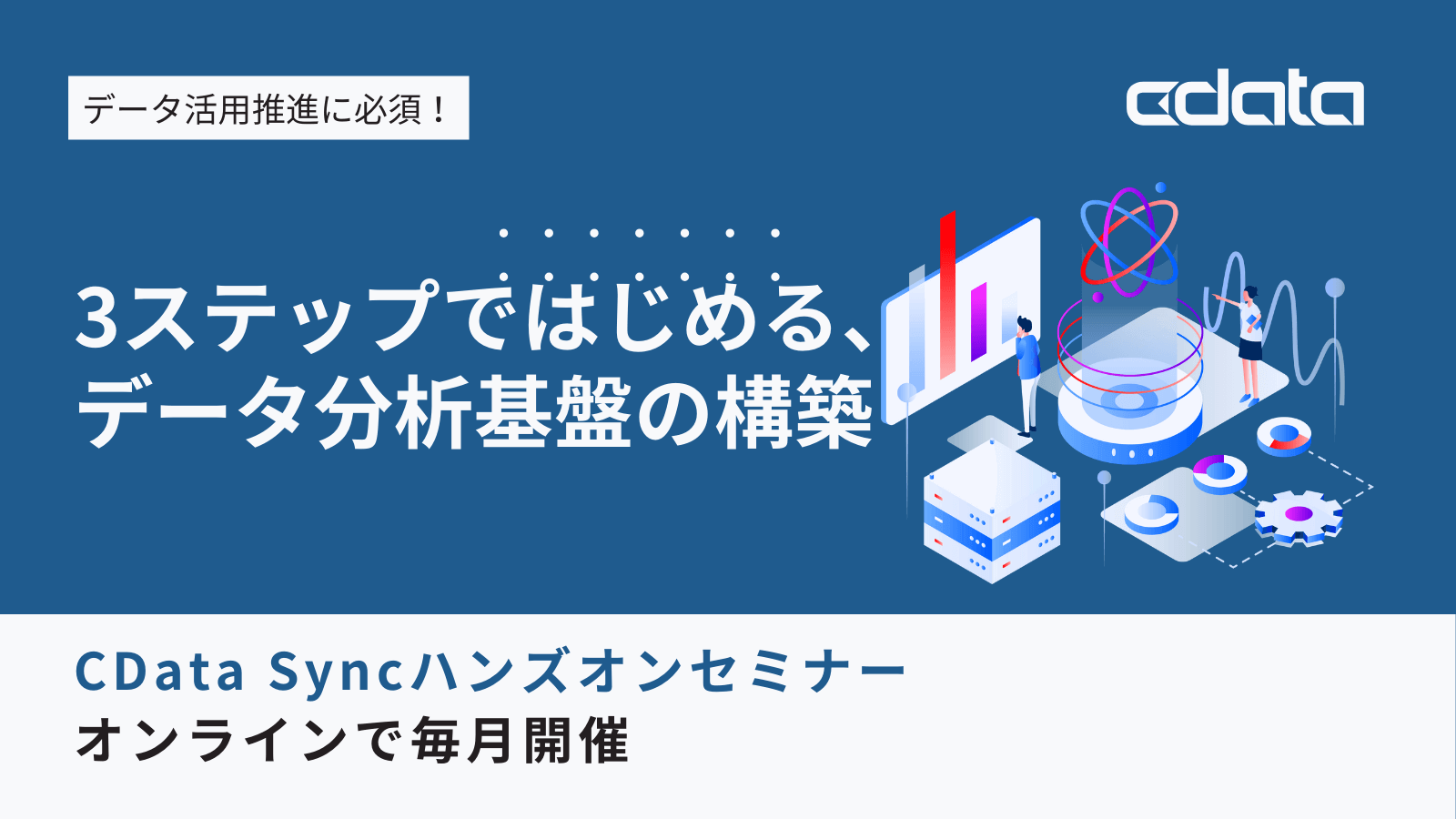ノーコードでクラウド上のデータとの連携を実現。
詳細はこちら →CData Software Japan - ナレッジベース
Latest Articles
- MySQL のデータをノーコードでREST API として公開する方法:CData API Server
- CData Sync AMI をAmazon Web Services(AWS)で起動
- Connect Cloud Guide: Derived Views, Saved Queries, and Custom Reports
- Connect Cloud Guide: SSO (Single Sign-On) and User-Defined Credentials
- Connect Cloud クイックスタート
- Shopify APIのバージョンアップに伴う弊社製品の対応について
Latest KB Entries
- DBAmp: Serial Number Expiration Date Shows 1999 or Expired
- CData Drivers のライセンスについて
- Spring4Shell に関する概要
- Update Required: HubSpot Connectivity
- CData Sync で差分更新を設定
- Apache Log4j2 Overview
ODBC Drivers
- [ article ] Microsoft Planner データをFileMaker Pro にインポートする方法
- [ article ] MySQL のFederated Table としてSAP ByDesign データを連携利用する
- [ article ] CData Software ODBC Driver を使ってAsprovaをeBay と連携
- [ article ] Delphi のTwilio データへのデータバインドコントロール
JDBC Drivers
- [ article ] Active Directory データをYellowfin に連携してビジュアライズ
- [ article ] Amazon S3 データをASTERIA Warp に繋いでみた
- [ article ] ETL/ELT のEmbulk を使ってYahoo! JAPAN DATA SOLUTION ...
- [ article ] Google Spanner データ のPostgreSQL インターフェースを作成
SSIS Components
- [ article ] Veeva をSSIS 経由でSQL サーバーにバックアップする
- [ article ] Smartsheet データからSQL Server ...
- [ article ] Authorize.Net をSSIS 経由でSQL サーバーにバックアップする
- [ article ] Excel データからSQL Server に接続する4つの方法をご紹介。あなたにピッタリな方法は?
ADO.NET Providers
- [ article ] Infragistics WPF XamDataGrid と Amazon DynamoDB ...
- [ article ] PowerShell からPinterest データに接続してデータの更新・挿入・削除を実行する方法
- [ article ] LINQ to MailChimp データに連携してみた
- [ article ] JasperReports Server で Adobe Analytics に連携する帳票を作成
Excel Add-Ins
- [ article ] StiLL からCData Software ODBC Driver を使ってSQL Server ...
- [ article ] Excel を使ってSFTP にデータを追加したり、SFTP のデータを編集する方法
- [ article ] DbVisualizer で Excel データに連携しクエリを作成
- [ article ] Mac OS X 上のMS Excel でOracle HCM Cloud データを連携利用
API Server
- [ article ] MySQL データベースへのOData データのETL/ELT ...
- [ article ] Apache Airflow でOData データに連携したワークフローを作る
- [ article ] OData データをSisense でビジュアライズ
- [ article ] Delphi のOData データへのデータバインドコントロール
Data Sync
- [ article ] Amazon S3 へのSage 300 データのETL/ELT ...
- [ article ] Azure Synapse へのKafka データのETL/ELT ...
- [ article ] Azure Data Lake へのStreak データのETL/ELT ...
- [ article ] Amazon Redshift へのAlloyDB データのETL/ELT ...
Windows PowerShell
- [ article ] XML データをPowerShell でMySQL にレプリケーションする方法
- [ article ] PowerShell からJira データに接続してデータの取得・更新・挿入・削除・CSV ...
- [ article ] Dynamics CRM データをPowerShell でMySQL にレプリケーションする方法
- [ article ] Dynamics 365 Business Central データをPowerShell ...
FireDAC Components
- [ article ] Delphi のMoney Forward Expense データへのデータバインドコントロール
- [ article ] Delphi のSage 300 データへのデータバインドコントロール
- [ article ] Delphi のAccess データへのデータバインドコントロール
- [ article ] Delphi のxBase データへのデータバインドコントロール





